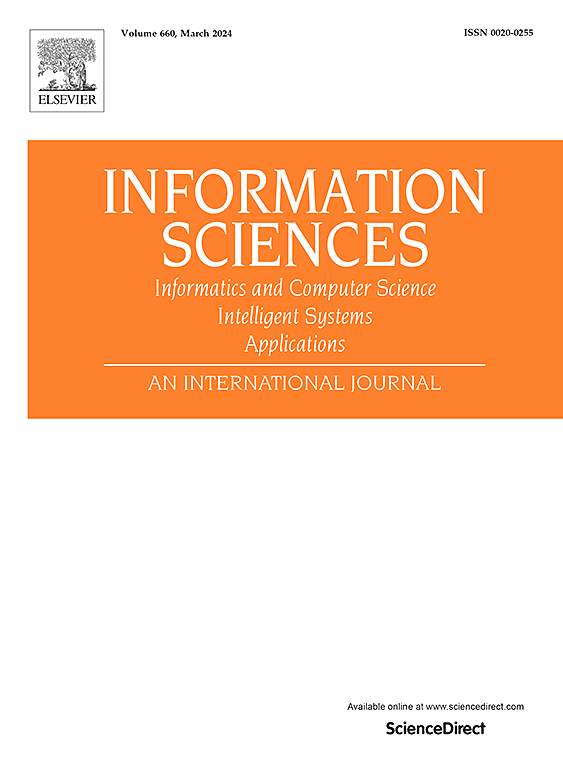Prompt-guided orthogonal multimodal fusion for cancer survival prediction
IF 8.1
1区 计算机科学
0 COMPUTER SCIENCE, INFORMATION SYSTEMS
引用次数: 0
Abstract
Cancer survival prediction can assist clinicians in developing personalized treatment plans for patients. Comprehensive cancer diagnosis and treatment require integrating macroscopic and microscopic imaging. However, significant discrepancies in the spatial resolution and anatomical scale between imaging modalities hinder existing multimodal fusion methods from effectively learning correlated semantic features with limited datasets. In this work, we introduce a prompt-guided orthogonal multimodal fusion strategy (POMF) for fusing multimodal medical images across anatomical scales. POMF utilizes modality-specific prompts to fine-tune pretrained models, facilitating bias adaptation to medical imaging features while ensuring more computationally efficient training. A modality consistency-discrepancy prototype is designed as the modality-inherent prompt in POMF, disentangling the multimodal features and bridging the potential correlations across the orthogonal modalities. POMF is validated on a glioma survival prediction task using paired radiology and pathology images. The experiment results suggest that POMF achieves superior C-index with existing full-tuning and prompt-tuning methods. Additionally, the ablation studies demonstrate that POMF is adaptable to various architectures of pretrained encoders and multiple multimodal fusion strategies on cross-scale medical images.
快速引导的正交多模态融合用于癌症生存预测
癌症生存预测可以帮助临床医生为患者制定个性化的治疗计划。肿瘤的综合诊断和治疗需要宏观和微观影像的结合。然而,不同成像方式在空间分辨率和解剖尺度上的显著差异阻碍了现有多模态融合方法在有限数据集上有效学习相关语义特征。在这项工作中,我们引入了一种提示引导的正交多模态融合策略(POMF),用于融合跨解剖尺度的多模态医学图像。POMF利用特定于模式的提示来微调预训练模型,促进对医学成像特征的偏差适应,同时确保更高效的计算训练。设计了一个模态一致性-差异原型作为POMF中的模态固有提示,解开多模态特征的纠缠,并弥合正交模态之间的潜在相关性。POMF在使用配对放射学和病理图像的胶质瘤生存预测任务中得到验证。实验结果表明,POMF在现有的全调谐和提示调谐方法下均能获得较好的C-index。此外,消融研究表明,POMF适用于各种预训练编码器架构和跨尺度医学图像的多种多模态融合策略。
本文章由计算机程序翻译,如有差异,请以英文原文为准。
求助全文
约1分钟内获得全文
求助全文
来源期刊

Information Sciences
工程技术-计算机:信息系统
CiteScore
14.00
自引率
17.30%
发文量
1322
审稿时长
10.4 months
期刊介绍:
Informatics and Computer Science Intelligent Systems Applications is an esteemed international journal that focuses on publishing original and creative research findings in the field of information sciences. We also feature a limited number of timely tutorial and surveying contributions.
Our journal aims to cater to a diverse audience, including researchers, developers, managers, strategic planners, graduate students, and anyone interested in staying up-to-date with cutting-edge research in information science, knowledge engineering, and intelligent systems. While readers are expected to share a common interest in information science, they come from varying backgrounds such as engineering, mathematics, statistics, physics, computer science, cell biology, molecular biology, management science, cognitive science, neurobiology, behavioral sciences, and biochemistry.
 求助内容:
求助内容: 应助结果提醒方式:
应助结果提醒方式:


